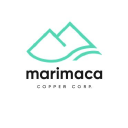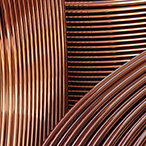Marimaca Copper Secures Strategic Cost Advantage Through Sulfuric Acid Plant Option
.jpg)
Marimaca options $2.5M acid plant, targeting 30% cost reduction vs market prices for key MOD input, mitigating volatility risk ahead of 2028 production.
- Marimaca Copper has secured an option to acquire a 150ktpa sulfuric acid plant for US$2.5 million, representing significant cost savings versus new plant construction estimated at US$50-60 million.
- The acquisition could reduce sulfuric acid costs by approximately 30% compared to current long-term market forecasts, from US$95/tonne to an estimated US$70/tonne production cost.
- The plant would supply 30-40% of total acid consumption requirements for the Marimaca Oxide Deposit, reducing exposure to volatile acid market pricing.
- Strategic timing aligns with planned production commencement in 2028, when Chilean acid market dynamics are expected to improve according to industry forecasts.
- The move addresses one of the most significant input cost risks for the company's flagship copper development project.
Marimaca Copper Corp. (TSX: MARI, ASX: MC2) is a copper exploration and development company focused on its 100%-owned flagship Marimaca Copper Project located in Chile's Antofagasta Region. The company is currently advancing the Marimaca Oxide Deposit through a Definitive Feasibility Study led by Ausenco Chile Ltda, while simultaneously exploring its extensive land package including the Sierra de Medina property block located 25km from the main deposit. With copper production expected to commence in 2028, Marimaca has strategically positioned itself to capitalize on growing copper demand while implementing cost optimization measures ahead of operations.
Strategic Rationale for Acid Plant Acquisition
The sulfuric acid plant acquisition represents a calculated move to address one of the most significant operational cost components for heap leach copper operations. Sulfuric acid serves as a critical reagent in the copper extraction process, and price volatility in this market has historically posed risks to mining operations' profitability.
President and CEO Hayden Locke emphasized the strategic importance of this acquisition:
"The MOD is forecast to be a mid-level acid consumer in the context of Chilean heap leach operations, and we continue to recognize acid cost as one of our most important drivers of profitability. We have numerous operational levers we can utilize to reduce acid consumption, if necessary, however, lowering the volatility associated with one of our key consumables was a logical step for the Company."
The acquisition provides multiple strategic advantages beyond simple cost reduction. By controlling a portion of its acid supply, Marimaca reduces its exposure to market volatility while creating operational flexibility. The plant's capacity of 150ktpa would cover approximately 30-40% of the Marimaca Oxide Deposit's total acid consumption requirements, depending on the development phase.
Financial Analysis & Cost Structure
The financial metrics underlying this acquisition demonstrate substantial value creation potential. Marimaca's analysis indicates that current market equipment costs for a new sulfuric acid plant of similar capacity would range from US$35-40 million, with total installation costs reaching US$50-60 million. The US$2.5 million acquisition price represents significant savings compared to new construction alternatives.
Locke provided detailed cost projections:
"Based on current projections from Comision Chilena del Cobre ('Cochilco'), which provides industry forecasts for long term acid supply and demand in the Chilean market, the expectation is for acid prices to normalize at around US$95/tonne in Mejillones from 2028 onwards. Our analysis indicates, based on today's elemental sulfur price (CFR Mejillones), a Company-owned acid plant could produce sulfuric acid for approximately US$70/tonne, excluding by-product credits from heat generation."
This represents approximately 30% cost reduction compared to Cochilco's long-term price forecasts. The savings become even more significant when considering current spot prices, which are elevated due to global shipping constraints and strong fertilizer industry demand.
Transaction Structure & Implementation Timeline
The acquisition follows a structured approach designed to minimize risk while providing adequate due diligence time. Marimaca will complete the transaction through CEMIN's subsidiary Administradora Industrial y Minera Pada SpA via a three-stage payment structure.
The company has committed US$1.0 million upfront concurrent with the agreement execution, followed by a second payment of US$1.5 million after a three-month exclusive due diligence period. This timeframe allows for comprehensive technical and engineering reviews, including detailed capital and operating cost estimates for plant installation and operation.
The agreement includes a commitment to mobilize plant equipment to a Marimaca-designated site before June 30, 2026, providing ample time for installation and commissioning ahead of planned production commencement in 2028. The plant previously operated until 2015, producing up to 150ktpa of sulfuric acid from elemental sulfur, and has been maintained on care and maintenance status since cessation of operations.
Market Dynamics & Industry Context
The Chilean sulfuric acid market presents both challenges and opportunities for copper producers. According to Cochilco forecasts, the market is expected to experience significant structural changes through 2033, with material reduction in local acid supply deficits beginning in 2028 due to declining consumption and projected increases in regional supply.
Current market conditions reflect elevated pricing due to several factors, including historically high shipping costs resulting from fleet repurposing previously used for sulfuric acid transport. Industry reports indicate new fleet construction underway, with favorable shipping rate impacts expected from 2026 onwards.
Locke highlighted the volatility reduction benefits:
"In addition, while the elemental sulfur and global sulfuric acid markets exhibit reasonably strong price correlation, the underlying volatility of the final acid cost via a sulfur burner is reduced. This is due to stoichiometric relationship of reacting one tonne of elemental sulfur to produce approximately three tonnes of concentrated (98%) sulfuric acid."
Technical & Operational Considerations
The sulfuric acid production process represents well-established industrial technology, involving heating elemental sulfur to molten state before injection into reaction chambers with oxygen to create sulfur dioxide gas. Subsequent processing through catalytic conversion and hydrogen absorption produces the final concentrated sulfuric acid product.
Marimaca's analysis indicates elemental sulfur costs represent 70-90% of total acid production costs, making sulfur price management critical to operational success. The company has engaged multiple sulfur burner manufacturers to obtain indicative capital and operating cost profiles, providing comprehensive basis for investment decisions.
The exothermic nature of the acid production process creates significant heat as a by-product, potentially used to offset production costs. While by-product credits for steam generation have not been included in initial analysis, they present additional cost reduction opportunities.
Storage & Logistics Advantages
Beyond direct cost savings, the acid plant acquisition simplifies storage strategy implementation. The company noted that storing physical elemental sulfur presents logistical advantages compared to concentrated sulfuric acid storage, reducing infrastructure requirements and associated capital expenditure.
Marimaca has initiated engagement with industrial operators in Mejillones regarding acid plant installation, leveraging existing infrastructure and expertise in the region. Mejillones serves as a key center for sulfuric acid imports to Chile and represents a significant production hub from local smelters and dedicated sulfur burners.
Risk Mitigation & Strategic Positioning
The acquisition addresses key financial risks facing the company's development timeline. Sulfuric acid represents one of the most significant variable cost components for copper heap leach operations, and price volatility has historically impacted project economics and operational cash flows.
By securing partial supply control, Marimaca reduces exposure to market volatility while maintaining flexibility to source additional requirements from spot or contract markets as needed. This hybrid approach provides cost optimization benefits while avoiding complete dependence on internal production.
The timing aligns strategically with planned production commencement in 2028, when Cochilco forecasts indicate improved market dynamics for acid pricing in Chile. This positioning allows Marimaca to benefit from both controlled production costs and improved market conditions for supplemental supply requirements.
Development Integration & Future Optimization
The sulfuric acid strategy represents one component of broader project optimization efforts currently underway. The company's Definitive Feasibility Study, nearing completion and under final review before publication, will not capture potential value upside from the acid strategy, creating clear optimization opportunities for future updates.
Locke emphasized the optimization potential:
"The MOD Definitive Feasibility Study, now largely complete and undergoing final review before publication, will not capture potential value upside from this acid strategy – a clear opportunity for optimization."
This suggests investors can expect future study updates to reflect improved project economics incorporating the acid plant benefits, potentially enhancing overall project returns and reducing operational risks.
For Investors
Marimaca Copper's sulfuric acid plant acquisition represents a strategically sound investment that addresses multiple operational and financial objectives. The US$2.5 million investment cost compares favorably to US$50-60 million new construction alternatives while providing approximately 30% cost reduction versus long-term market forecasts.
The acquisition aligns with planned production timeline, reduces exposure to volatile input cost markets, and positions the company to benefit from improving Chilean acid market dynamics beginning in 2028. With the Definitive Feasibility Study nearing completion, this optimization opportunity provides clear upside potential for future project economics updates.
For investors evaluating Marimaca, this acquisition demonstrates management's proactive approach to cost optimization and risk mitigation ahead of production commencement. The strategic timing, favorable acquisition terms, and substantial cost reduction potential support the investment thesis while reducing key operational risks for the flagship Marimaca Oxide Deposit development.
Analyst's Notes




Subscribe to Our Channel
Stay Informed























